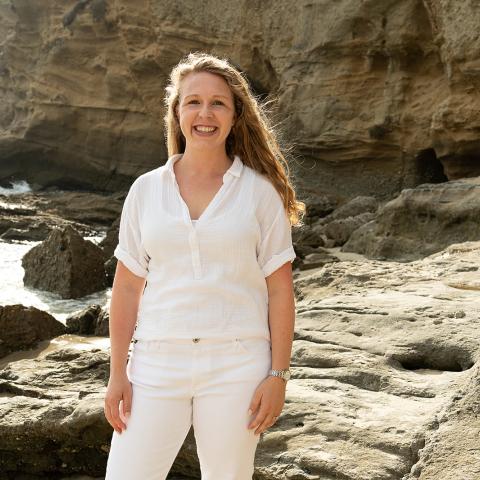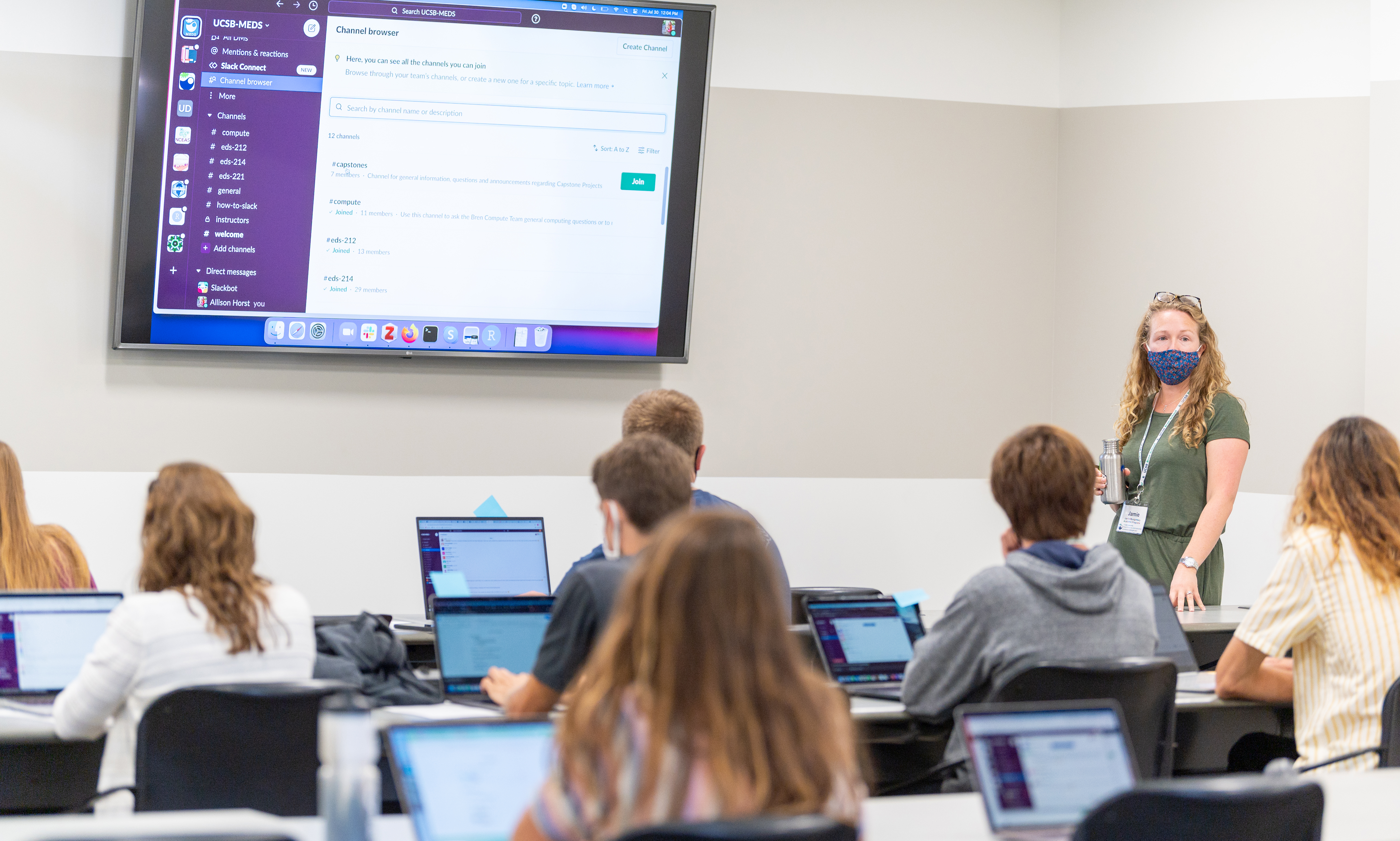
When Jamie Montgomery graduated from the Master of Environmental Science and Management program in 2013, she knew that she wanted to combine her long-standing interest in marine science with the coding and data analysis skills she had learned at Bren. There wasn’t yet a standardized name for the job she envisioned, but she found it in her role as a marine data scientist with the National Center for Ecological Analysis & Synthesis (NCEAS) that combined her interests.
Seven years later, the career path she chose has not only a name—environmental data science—but a rapidly growing array of opportunities. Today, Jamie supports students who are looking to be part of the future of this field as coordinator for the Master of Environmental Data Science program, a new addition to the professional master’s programs offered at the Bren School.
“My first exposure to data science was through my MESM degree at Bren, and the master’s group project was my first opportunity to get my hands dirty with code. It was so powerful to realize what I could do with a programming language—the questions I could begin to ask and find answers to,” she says.
Those questions range from the relatively narrow—such as tracking migration patterns for a particular species or evaluating biodiversity in a limited area—to the seemingly impossible to answer. At NCEAS, Jamie worked on the Ocean Health Index, which brings together diverse data sets to measure ocean health.
“There are a lot of different components that the Index measures,” Jamie says. “From biodiversity and water pollution, to human relationships with the ocean via tourism, recreation, and jobs. The OHI synthesizes nearly 100 different data layers every year. So, we built it using code that can just be updated and re-run year after year. That reduces the amount of work it takes to make a project like this possible and viable over time.”
